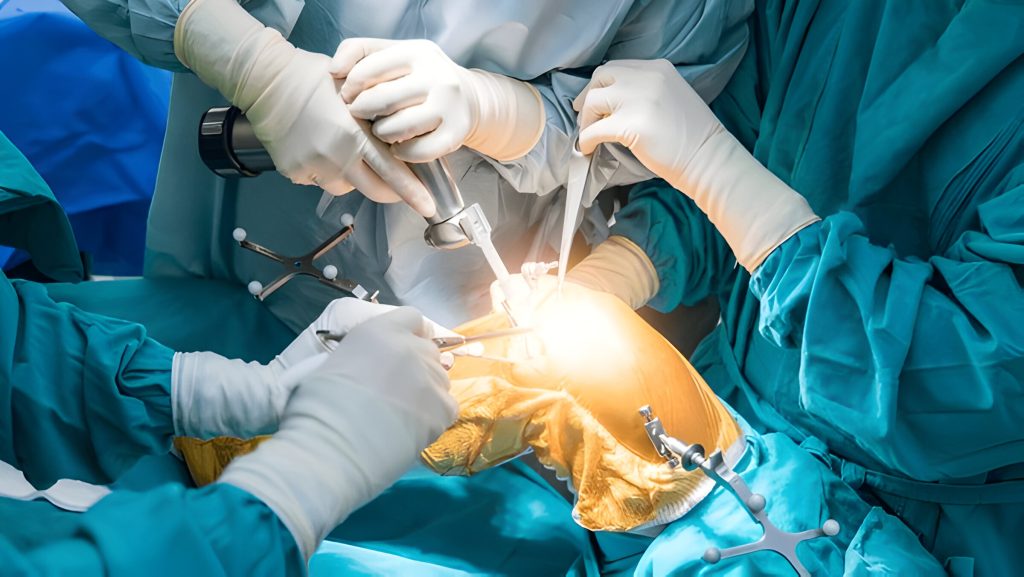
Comprehensive Guide to Knee Replacement Surgery: Process and Recovery
When the pain from knee damage becomes unmanageable, total knee replacement surgery may offer a life-changing solution. This guide delves into every aspect of knee replacement surgery in Delhi, from the types of procedures to the recovery journey, to help you make informed decisions about your health.
Understanding Total Knee Replacement Surgery
Total Knee Replacement (TKR), also known as knee arthroplasty, is a surgical intervention meant to restore mobility by replacing damaged knee joint surfaces with a prosthesis. This procedure becomes necessary when medication, physical therapy, and lifestyle changes are no longer sufficient for pain relief. With TKR, patients typically experience significant pain reduction and improved knee functionality, often regaining the ability to engage in daily activities.
Types of Knee Replacement Procedures
- High Flex Knee Replacement
Designed for patients seeking a greater range of motion, high-flex implants allow knee bending up to 150-155 degrees. This enhancement helps with activities like kneeling and climbing stairs, which is often challenging for patients with conventional implants. Note that this type requires additional bone resection to accommodate the implant.
- Oxinium Knee Replacement
Using oxidised zirconium (OxZr), Oxinium implants minimise wear and tear and increase the implant’s lifespan by reducing the likelihood of loosening and debris formation. This implant is ideal for patients seeking long-term durability and reduced chances of complications.
- Revision Knee Replacement
This knee replacement surgery in Delhi replaces a previously implanted prosthesis that may have worn out, sustained damage, or developed an infection. For patients with infections, a two-stage process is often followed: first, an antibiotic spacer is implanted to clear the infection, followed by a secondary surgery to place a new implant.
- Minimally Invasive Knee Replacement
Leveraging technology like computer navigation, this technique allows surgeons to perform knee replacements with smaller incisions, resulting in less pain, shorter hospital stays, and faster recovery.
- Partial Knee Replacement
For patients with isolated knee damage, partial knee replacement provides a targeted solution, replacing only the affected part of the knee. This approach results in quicker recovery and retains as much of the natural knee structure as possible.
Preparing for Knee Replacement Surgery
Preparation for knee surgery is crucial. Discussing the procedure with your surgeon, like Dr. Ishwar Bohra at BLK-Max Hospital, will clarify the steps, potential risks, and benefits of advanced techniques being used.
Transparency between patient and surgeon helps build trust, ensuring you feel confident in the hands of skilled professionals.
What Happens During Knee Replacement Surgery?
Performed under spinal or general anaesthesia, the surgery involves these steps:
- An incision is made to access the knee joint.
- Damaged cartilage and bone are removed.
- A prosthesis made of durable metal or polymer is positioned and fixed with surgical-grade cement.
- The incision is closed, and drainage may be placed to manage fluids.
Your surgeon will walk you through the details, so you know exactly what to expect during and after the procedure.
Recovery Process After Knee Replacement Surgery
Recovery from knee replacement surgery varies but often follows these phases:
- Pain Management and Initial Days Post-Surgery
Pain and swelling are expected but managed effectively with medications, ice, and compression. For sleep, lying on your back with your leg elevated can aid circulation and reduce swelling.
- Starting Physical Therapy
Physical therapy begins soon after surgery. Your therapist will introduce gentle exercises, such as ankle pumps and knee straightening, to help improve flexibility and prevent stiffness.
- Gradual Return to Daily Activities
Within three weeks, you’ll likely begin walking without crutches. Working with your physical therapist, you’ll gradually increase activity levels, resuming light daily tasks by six weeks post-surgery.
- Special Exercises to Aid Recovery
Exercises like quadriceps sets, gluteal squeezes, and assisted knee bending are beneficial in building strength and flexibility. Engaging in these exercises diligently will help you regain full function faster.
- Stair Navigation Tips
When navigating stairs post-surgery, use the railing for support, leading with the non-operative leg when climbing up and with the operative leg when descending. Over time, with improved strength, you will find this movement more manageable.
Importance of Working with a Physical Therapist
Collaborating with a physical therapist is key to a successful recovery. Tailored physical therapy accelerates the healing process, ensuring you can return to daily activities and avoid injuries that may affect the implant.
Why Choose BLK-Max Hospital for Knee Replacement Surgery?
BLK-Max Hospital provides advanced knee replacement options under the expertise of highly qualified specialists like Dr. Ishwar Bohra. The hospital is equipped with state-of-the-art facilities, ensuring patient comfort and safety throughout the treatment and recovery process.
Know more about : Knee Replacement Surgery – What To Expect & How to prepare for it?
Conclusion
Knee replacement surgery in Delhi is a reliable solution to severe joint issues, promising pain relief and restoring mobility. With the right care, recovery is manageable, enabling you to get back to an active, pain-free lifestyle. Consult with a trusted orthopaedic surgeon in Delhi, and embrace this step toward a better quality of life.



